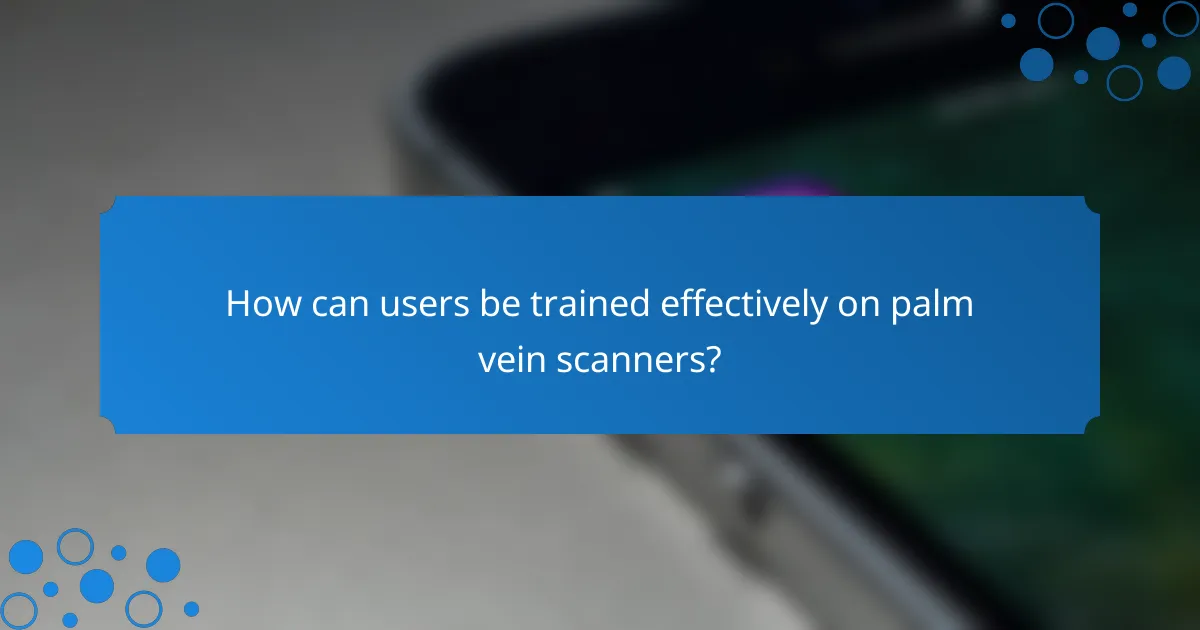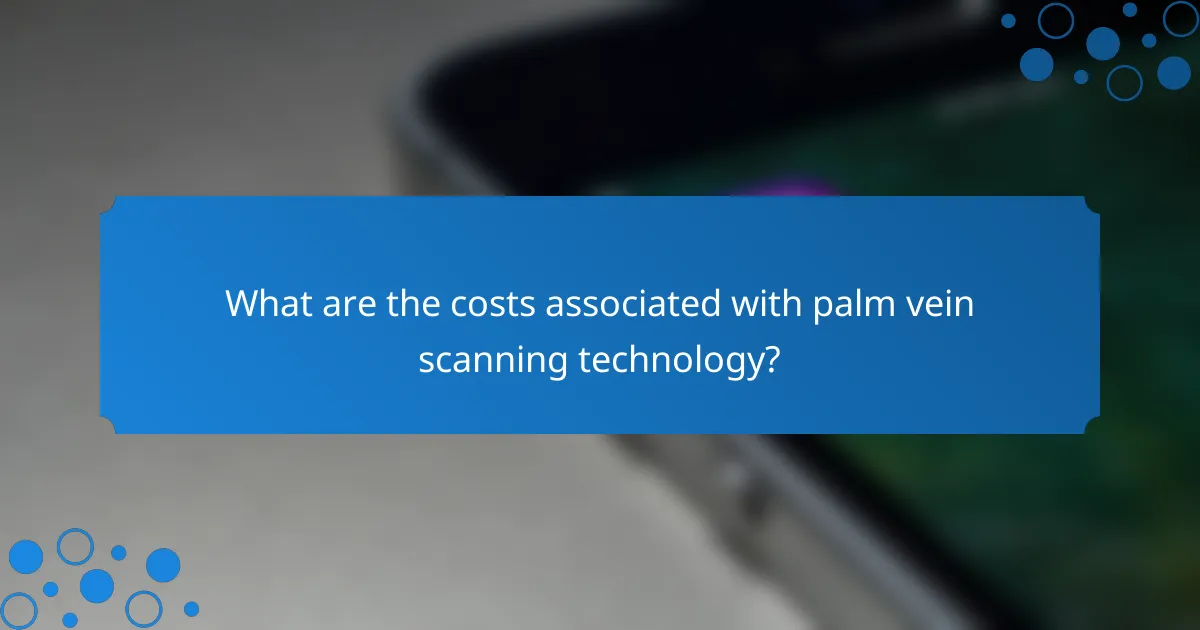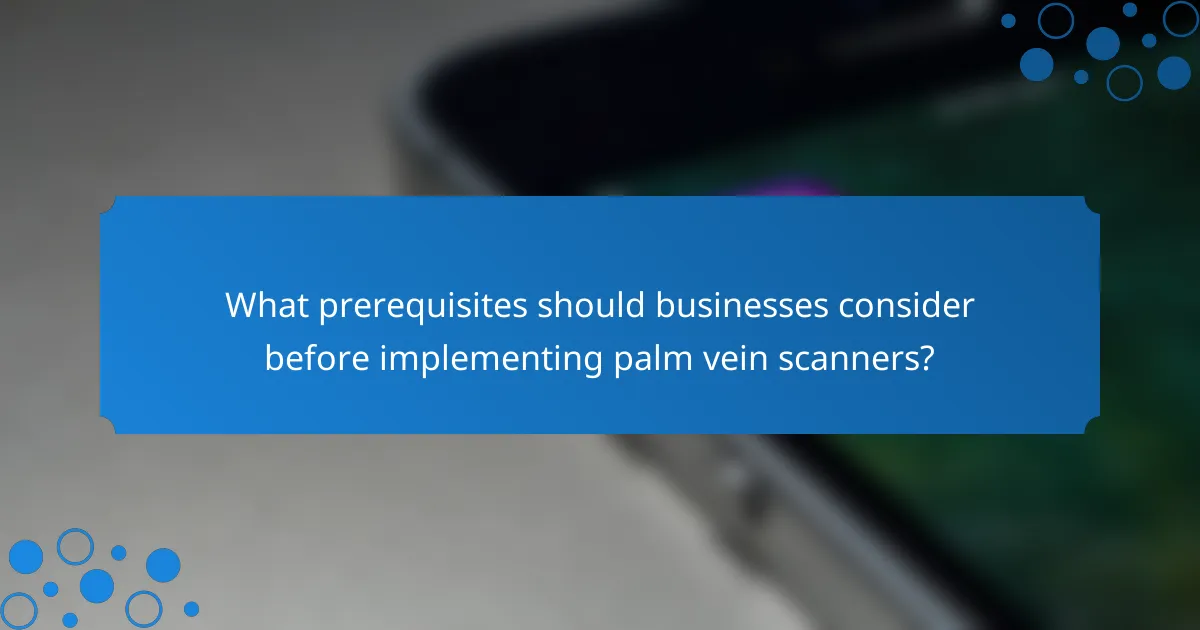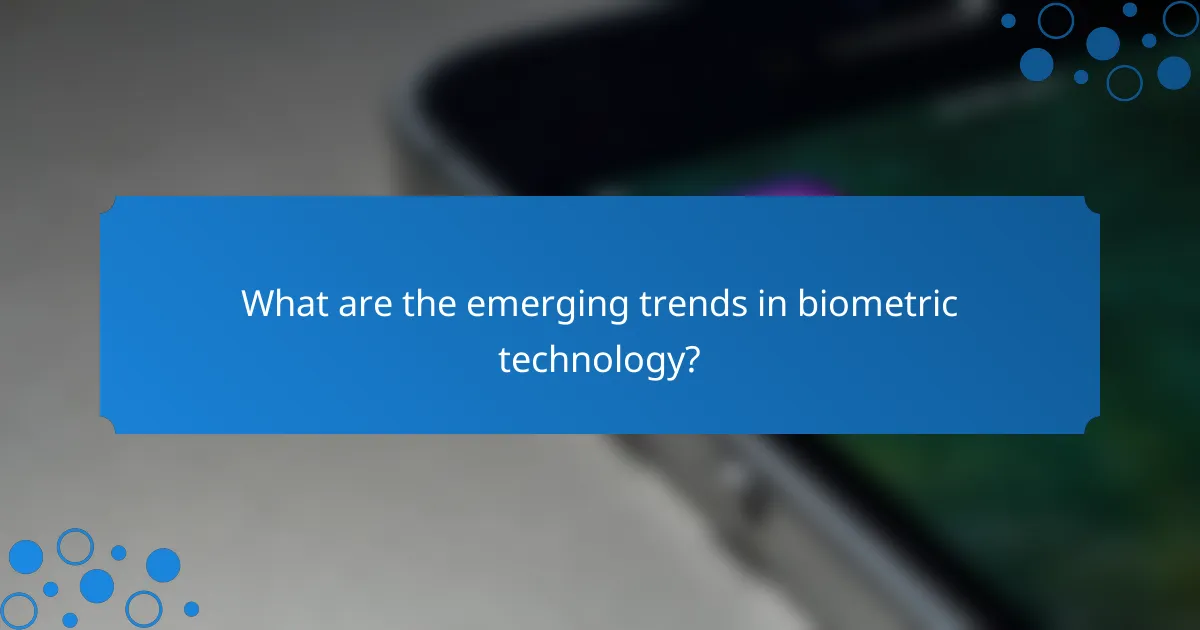Palm vein scanners offer a unique biometric solution, but their adoption in Canada is hindered by limitations such as environmental factors, high costs, and integration challenges with existing systems. To maximize their effectiveness, comprehensive user training is essential, ensuring that operators can utilize the technology accurately and securely. Additionally, businesses must carefully consider the total costs associated with equipment acquisition and ongoing maintenance when evaluating this advanced identification method.

What are the limitations of palm vein scanners in Canada?
Palm vein scanners in Canada face several limitations, including environmental factors, high costs, and integration issues with existing systems. These challenges can affect their overall effectiveness and adoption in various sectors.
Environmental factors affecting accuracy
Environmental conditions such as lighting, temperature, and humidity can significantly impact the accuracy of palm vein scanners. For instance, extreme temperatures may cause changes in skin properties, leading to inconsistent readings. Additionally, bright lighting can create reflections that interfere with the scanner’s ability to capture vein patterns accurately.
To mitigate these effects, it is essential to install scanners in controlled environments where possible. Regular maintenance and calibration can also help ensure optimal performance despite varying conditions.
Cost implications for businesses
The initial investment in palm vein scanning technology can be substantial, often ranging from several thousand to tens of thousands of Canadian dollars, depending on the system’s sophistication. This cost includes not only the hardware but also software licenses and ongoing maintenance fees.
Businesses must weigh these costs against the potential benefits, such as enhanced security and reduced fraud. Budgeting for training and integration with existing systems is also crucial, as these can add to the overall expenditure.
Integration challenges with existing systems
Integrating palm vein scanners with current security systems can pose significant challenges. Compatibility issues may arise, requiring additional software development or hardware upgrades, which can further increase costs and implementation time.
To streamline integration, businesses should conduct thorough assessments of their existing systems and consult with vendors about compatibility. Planning for a phased implementation can also help address potential disruptions during the transition.

How can users be trained effectively on palm vein scanners?
Effective training for users of palm vein scanners involves comprehensive instruction on the technology’s operation and best practices for accurate scanning. This ensures users can efficiently utilize the equipment while minimizing errors and maximizing security.
Training programs offered by manufacturers
Many manufacturers provide structured training programs that cover the technical aspects of palm vein scanners, including setup, maintenance, and troubleshooting. These programs often include hands-on sessions, instructional videos, and user manuals tailored to specific models.
Some manufacturers may also offer online courses or webinars, which can be convenient for organizations with remote employees. It’s beneficial to choose a program that includes certification, as this can enhance user confidence and competence.
Best practices for user onboarding
To ensure effective onboarding, organizations should create a clear training schedule that includes both theoretical and practical components. Users should practice scanning techniques in a controlled environment to build familiarity with the equipment.
Additionally, providing ongoing support and refresher courses can help users stay updated on any software or procedural changes. Establishing a feedback loop where users can report issues or suggest improvements can further enhance the training process.

What are the costs associated with palm vein scanning technology?
The costs of palm vein scanning technology encompass initial equipment purchases, ongoing maintenance, and support expenses. Understanding these costs is crucial for businesses considering this biometric system for secure access and identification.
Initial equipment purchase costs
The initial purchase costs for palm vein scanners can vary significantly based on brand and features, typically ranging from a few hundred to several thousand USD. High-end models with advanced capabilities may cost more, while basic units are available at lower prices. When budgeting, consider not just the scanner itself but also any necessary accessories or software.
Ongoing maintenance and support expenses
Ongoing maintenance and support for palm vein scanning systems can add to the total cost over time. Businesses should anticipate expenses for software updates, technical support, and potential repairs, which can range from a few hundred to a couple of thousand USD annually. Regular maintenance is essential to ensure the system operates efficiently and securely.
Cost comparison with alternative biometric systems
When comparing palm vein scanners to alternative biometric systems, such as fingerprint or facial recognition, costs can differ notably. Fingerprint scanners are generally less expensive, with initial costs often in the lower hundreds of USD, while facial recognition systems can range widely, sometimes exceeding several thousand USD. However, palm vein scanners offer advantages in terms of accuracy and security, which may justify their higher price for certain applications.

What prerequisites should businesses consider before implementing palm vein scanners?
Businesses should assess their specific security requirements and ensure compatibility with existing infrastructure before adopting palm vein scanner technology. Understanding these prerequisites can help streamline implementation and enhance overall security effectiveness.
Assessment of current security needs
Evaluating current security needs involves identifying vulnerabilities and determining how palm vein scanners can address them. Businesses should consider factors such as the sensitivity of the data being protected and the potential risks associated with unauthorized access.
For example, organizations dealing with personal health information or financial data may prioritize stronger authentication methods. A thorough risk assessment can help in deciding whether palm vein scanning is a suitable solution compared to other biometric options.
Evaluation of existing infrastructure compatibility
Before implementing palm vein scanners, businesses must assess whether their current systems can support this technology. This includes checking hardware and software compatibility, as well as ensuring that the necessary network infrastructure is in place.
For instance, if a company uses outdated access control systems, upgrades may be required to integrate palm vein scanners effectively. Additionally, evaluating the physical space for scanner installation is crucial to ensure user convenience and operational efficiency.

What are the emerging trends in biometric technology?
Emerging trends in biometric technology focus on enhancing accuracy, integrating artificial intelligence, and expanding applications across various sectors. These advancements aim to improve user experience and security while addressing limitations in existing systems.
Advancements in palm vein recognition accuracy
Recent developments in palm vein recognition technology have significantly improved accuracy rates, often exceeding 99%. These advancements include better imaging techniques and algorithms that can analyze vein patterns more effectively, reducing false acceptance and rejection rates.
To ensure optimal performance, users should consider environmental factors such as lighting and cleanliness of the scanning surface. Regular updates to software and hardware can also help maintain high accuracy levels.
Integration with AI and machine learning
The integration of AI and machine learning into palm vein scanning systems enhances their ability to learn from data and adapt to new patterns. This allows for real-time analysis and improved decision-making processes, making systems more efficient and reliable.
Organizations adopting these technologies should invest in training staff to understand AI-driven insights and how to leverage them for better security outcomes. Additionally, ensuring data privacy and compliance with regulations is crucial when implementing AI solutions.
Future applications in various industries
Future applications of palm vein scanning technology span multiple industries, including healthcare, finance, and security. In healthcare, it can streamline patient identification, while in finance, it can enhance transaction security and reduce fraud.
As the technology matures, businesses should explore partnerships with tech providers to develop tailored solutions that meet specific industry needs. Keeping abreast of regulatory changes and user acceptance trends will also be vital for successful implementation.
